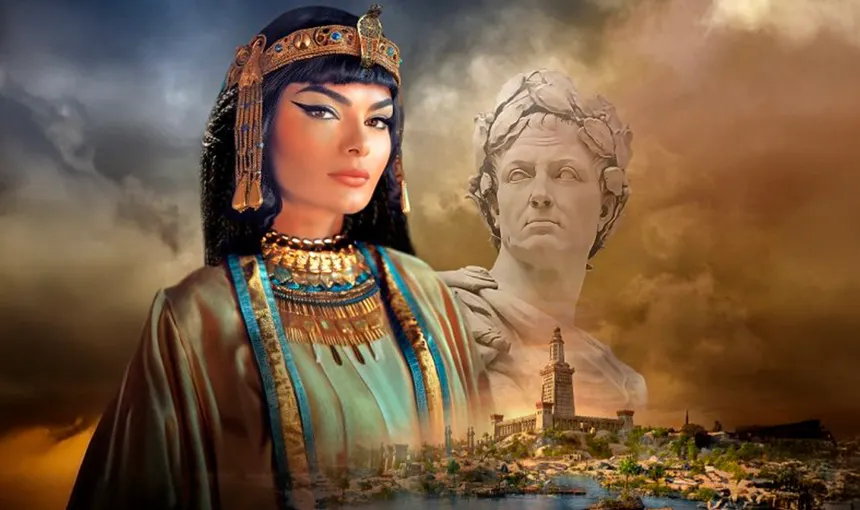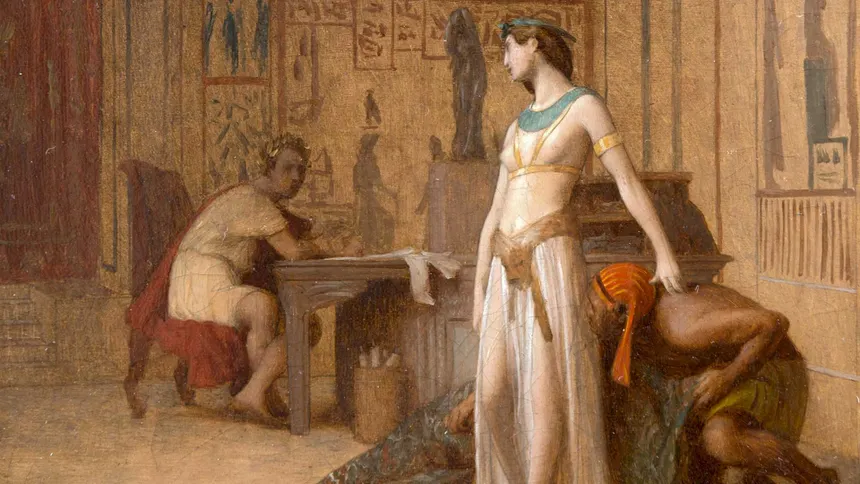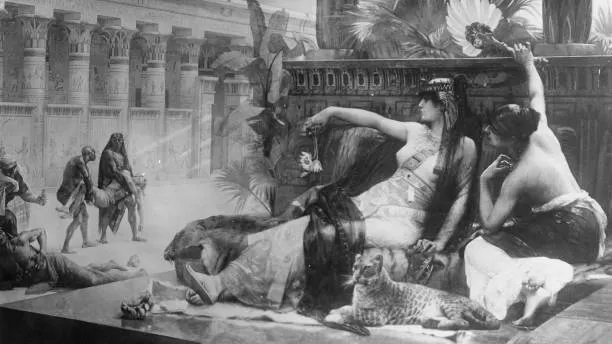Cleopatra: Egypt’s Last Pharaoh and the Woman Behind the Legend

Introduction: More Than a Seductress
Few historical figures captivate the world’s imagination like Cleopatra VII Philopator, the last active ruler of the Ptolemaic Kingdom of Egypt. Known for her famed beauty, romantic liaisons with Julius Caesar and Mark Antony, and tragic death, Cleopatra’s real story is far more nuanced and powerful than the legends suggest. She was not just a lover of Roman leaders—she was a formidable politician, a skilled linguist, and a determined ruler who fought to preserve her kingdom’s independence amid the crumbling of the Hellenistic world.
This article explores the life, legacy, and myth of Cleopatra, from her early years to her death and the symbolic weight she still carries today.
1. Cleopatra’s Royal Lineage and Early Life
Cleopatra was born in 69 BCE in Alexandria, Egypt, into the Ptolemaic dynasty, a Greek royal family descended from Ptolemy I Soter, one of Alexander the Great’s generals. Despite ruling Egypt, the Ptolemies rarely spoke Egyptian and largely embraced Hellenistic culture.
Cleopatra, however, was different—she was the first in her dynasty to learn the Egyptian language, in addition to Greek and several others, including Latin, Aramaic, and possibly Ethiopian. This linguistic skill reflected her political astuteness and willingness to present herself as a “true” Egyptian ruler, even appearing as the goddess Isis in religious ceremonies.
2. A Struggle for Power: Cleopatra and Her Family
Cleopatra co-ruled with her father, Ptolemy XII Auletes, and after his death, with her brother Ptolemy XIII, whom she was forced to marry by Egyptian custom. The two soon clashed for control of Egypt. In 48 BCE, Cleopatra was exiled from the royal palace during this power struggle—but she did not remain in exile for long.
This is where the famous story begins.

3. Cleopatra and Julius Caesar: A Strategic Alliance
When Julius Caesar arrived in Egypt chasing his rival Pompey, Cleopatra saw an opportunity. According to legend, she had herself smuggled into Caesar’s quarters rolled in a carpet (or linen sack)—a dramatic gesture that led to one of the most powerful alliances in ancient history.
Caesar and Cleopatra became lovers and allies. With his military support, she defeated her brother Ptolemy XIII in the Alexandrian War. She was restored to the throne, co-ruling with another younger brother, Ptolemy XIV (whom she likely had killed), and later with her son Ptolemy XV Caesarion, whom she claimed was Caesar’s child.
Cleopatra visited Rome and stayed in Caesar’s villa until his assassination in 44 BCE. Her presence caused political unease, and after his death, she returned to Egypt.
4. Mark Antony and the Last Stand of Egypt
Cleopatra’s most famous relationship began when she met Mark Antony in 41 BCE. Their alliance was both romantic and political. Antony needed Egypt’s wealth and Cleopatra’s support for his Eastern campaigns; Cleopatra needed a strong Roman protector.
They had three children together and lived between Alexandria and other Eastern territories. Their court became the subject of gossip and scandal in Rome, especially as Antony distanced himself from his Roman wife, Octavia (sister of Octavian, later Augustus Caesar).
In 34 BCE, the couple staged the Donations of Alexandria, where Antony declared Caesarion as Caesar’s true heir and gave eastern lands to Cleopatra’s children. This alarmed Octavian, who used it to justify war.
5. The Battle of Actium and Cleopatra’s Death
In 31 BCE, Octavian’s forces defeated Antony and Cleopatra’s fleet at the Battle of Actium. The lovers fled to Egypt, and as Octavian’s forces closed in, Antony committed suicide after receiving false news of Cleopatra’s death.
Cleopatra followed shortly after—according to tradition, dying by the bite of an asp (Egyptian cobra), though some modern scholars argue she used poison.
Her death marked the end of Ptolemaic Egypt, which became a Roman province. Caesarion was captured and killed. Egypt, once a mighty kingdom, fell under the control of Rome.
6. Cleopatra’s Legacy: Between Myth and Reality
Cleopatra’s image has been shaped by Roman propaganda, Shakespearean drama, and Hollywood film. Roman writers—especially those loyal to Octavian—portrayed her as a manipulative temptress who corrupted noble Roman men. In reality, she was a highly intelligent, politically savvy leader in a male-dominated world.
Her legacy remains powerful:
- A symbol of female empowerment and resistance
- A cultural icon in art, film, and literature
- The last ruler of ancient Egypt before Roman rule
She has been played on screen by Elizabeth Taylor, Monica Bellucci, and others, each reflecting the perceptions of their times. Today, Cleopatra continues to inspire debate about race, gender, and historical bias.

Conclusion: The Woman Behind the Legend
Cleopatra was not merely a seductress, nor was she just a pawn in the struggles of Roman men. She was the last pharaoh of Egypt, a strategist, a diplomat, and a ruler who tried to protect her country’s independence in a world increasingly dominated by Rome. Her life remains a testament to power, intelligence, and resilience—qualities that far outshine the myths.




